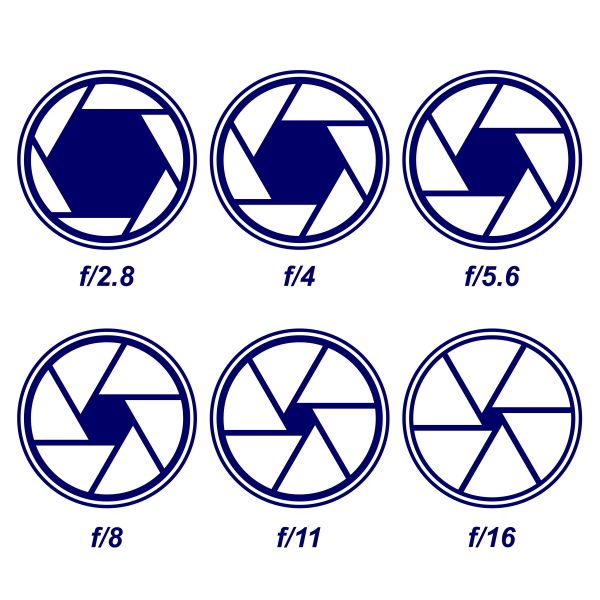How To Completely Change Your Photography By Understanding Aperture
 Setting the aperture on your camera lens to control your depth of field can get far more in depth than this blog post. My goal is to give you a basic understanding of aperture. The next step beyond this post is to break out your digital camera provided that you have one (typically a DSLR or nice mirroless) that allows you do change the aperture, also known as f-stop, of your camera lens.
Setting the aperture on your camera lens to control your depth of field can get far more in depth than this blog post. My goal is to give you a basic understanding of aperture. The next step beyond this post is to break out your digital camera provided that you have one (typically a DSLR or nice mirroless) that allows you do change the aperture, also known as f-stop, of your camera lens.
In its simplest form, aperture is simply the lens opening. In the graph above, if you were shooting with an f/2.8 lens, that might be the widest opening for the lens which provides a more shallow depth of field. That simply means that the area behind your subject or even certain areas of your subject is more out of focus with a wide lens opening vs. f/16 (shown above) which would provide a background that is more in focus.

Shallow Depth of Field with f/2.8 lens set to f/5.6
An Easy Way To Understand Aperture
An even easier way to explain this is by showing an example of an image. The image on the right was shot with an f/2.8 lens which is the widest opening on the lens used. I set it at f/5.6 which is known in technical terms as stopping the lens down. Each setting change from the graph above starting with f/2.8 is considered 1 stop. So f.4.0 is one position or stop from f/2.8, f/5.6 is two positions or stops, f/8 is 3 positions or stops, f/11 is 4 positions or stops and so on. It’s important to know this because these settings control the focus of the background behind the subject or even parts of your subject when using a really shallow depth of field. The image to the right would not be the same if the background was completely in focus.
The lower the number based on your maximum lens opening the more shallow depth of field and the higher the number the sharper the depth of field. You don’t always want shallow depth of field. An example of stopping the lens all the way down or in other words setting the lens to f/16, f/22 or even f/32 (in cases that the lens goes to f/32) would be when you absolutely need everything in focus from front to back like on a large group shot that is 15 rows deep of 200 people.
Take Control of Your Aperture
Aperture is one of the single most important elements in photography. By understanding it thoroughly, your photography will get better. There are two key ways to understand aperture better: 1) Read about it, watch videos, ask other photographers, never stop learning and 2) Testing, testing, testing: Know your camera and settings, especially f/stop or aperture like you’ve never known before. It’s truly one of the easiest ways to become a better photographer. Understanding light, controlled by aperture, is another key way to improve your photography. Light is another area to dive into as you continue learning about photography.
Choosing A Lens Based On Aperture
Most kit lenses that come with consumer cameras have a range of something like f/3.5-5.6 or f/4-5.6 and are not really what is considered a fast lens ( f/2.8 or lower typically). Kit lenses not only limit you with the starting f/stop but by a varying f/stop that changes at different focal points and the quality of the glass. You can see one of my previous posts on prime lenses which will help and another post on The Glass (lens) that should also help. That way, I don’t have to repeat it all here.
David Williams
Latest posts by David Williams (see all)
- 5 Signs You’re Hiring the Wrong Photographer for Your Business - April 9, 2025
- How Will AI Change Professional Photography? - February 2, 2025
- Family Photographers vs. Commercial Photographers: Exploring the Differences in Approach, Purpose, and Technique - February 2, 2025
- Black and White Film Shot Of Our Golden Retriever: Trigger - February 2, 2022
- North Carolina Snow Images Shot In Franklin County - January 22, 2022




